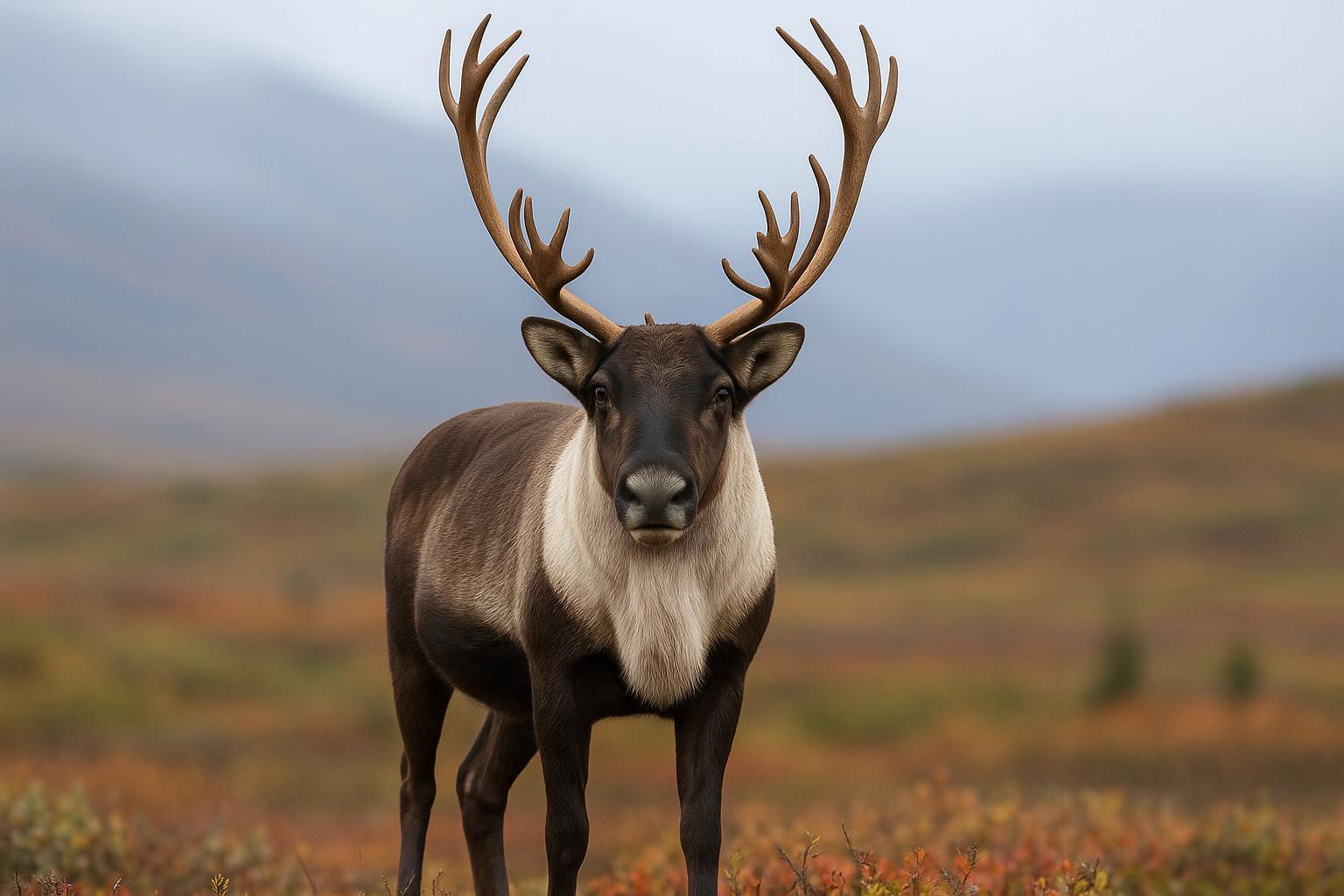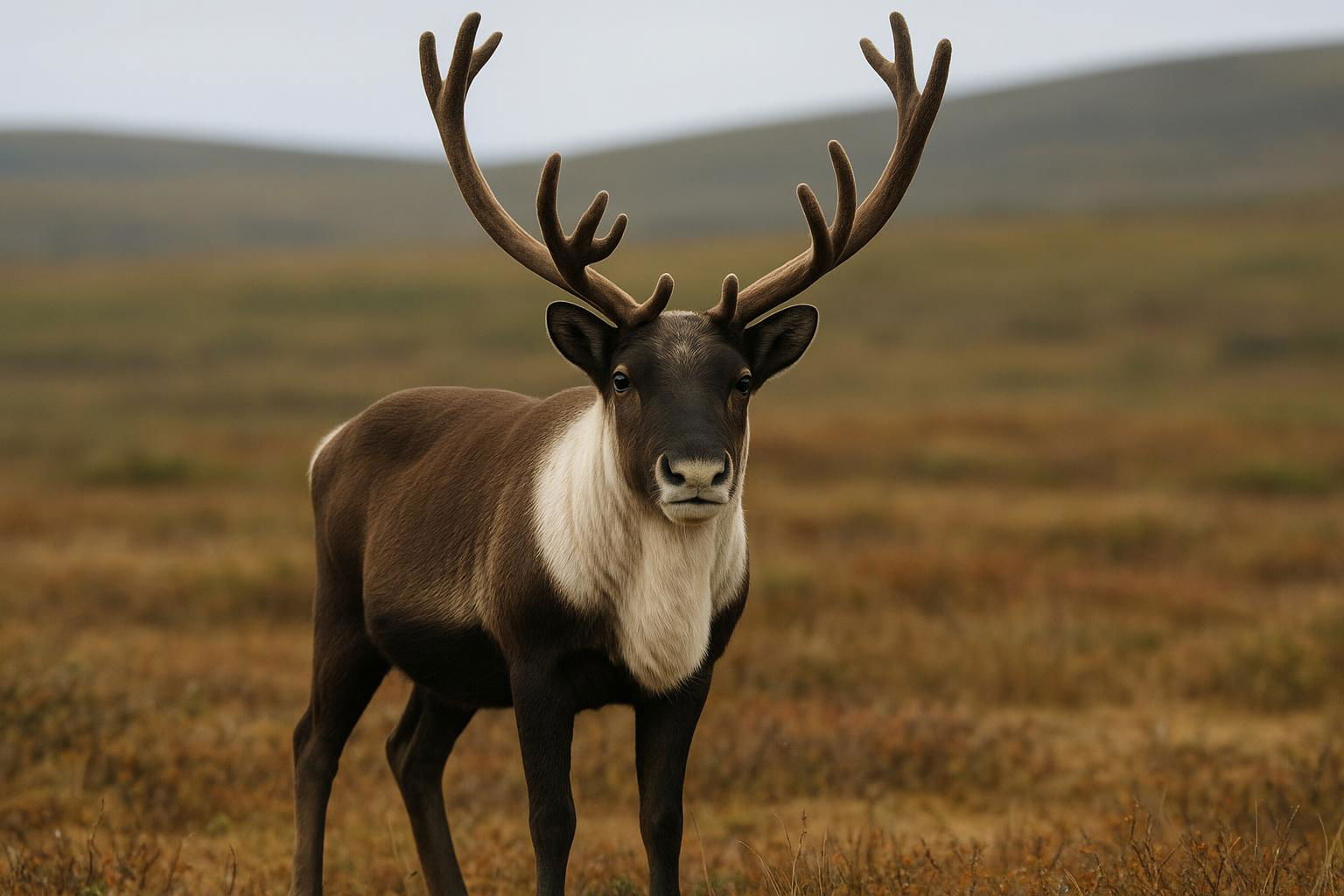
Reindeer
Rangifer tarandus
The reindeer, known scientifically as Rangifer tarandus, is a remarkable species of deer found primarily in the Arctic and subarctic regions including parts of North America, Europe, and Asia. These robust mammals are well-adapted to their cold environments, featuring a thick double-layered fur coat that provides excellent insulation against harsh temperatures. Reindeer are distinctive for their impressive antlers, which, unusually among deer species, are present in both males and females, though they are typically larger and more elaborate in males. These antlers play a crucial role during the breeding season for attracting mates and establishing dominance hierarchies.
Reindeer are highly migratory animals, often undertaking long seasonal migrations covering vast distances in search of food. Their hooves are uniquely adapted to traverse different terrains; they are broad and flat, allowing reindeer to move efficiently across snow and soft, swampy ground. In terms of diet, reindeer primarily graze on lichens, known as "reindeer moss," but they also consume grasses, leaves, and other vegetative matter when available.
Social creatures, reindeer live in herds that can range from small family groups to massive aggregations that number in the thousands. These herding behaviors are crucial for protection against predators such as wolves and bears. Reindeer have also played a significant cultural and economic role for indigenous peoples across the Arctic, not only serving as a source of food but also as beasts of burden and companions in mythology and tradition. With their fascinating adaptations and cultural significance, reindeer remain a symbol of the resilience and interconnectedness of Arctic life.
View 42 reindeer breeders in the Creatures breeders directory.

 All Species & Breeds
All Species & Breeds
 Highland Cattle
Highland Cattle
 Miniature Donkeys
Miniature Donkeys
 All Species Directory
All Species Directory
 Highland Cattle in Virginia
Highland Cattle in Virginia
 Miniature Donkeys in Texas
Miniature Donkeys in Texas















